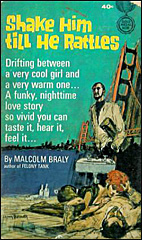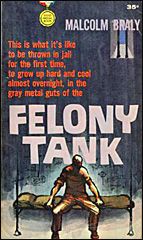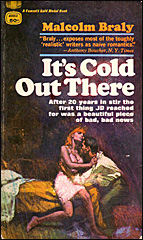FIRST YOU READ, THEN YOU WRITE
by Francis M. Nevins
Last month I talked about some of the correspondence between Erle Stanley Gardner, creator of Perry Mason, and Harry Stephen Keeler, creator of the craziest characters — not to mention the books that housed them! — ever conjured up on land or sea. But I had no space to say anything about the one Keeler book in which ESG is mentioned. THE GALLOWS WAITS, MY LORD! was written in 1953, the year Harry’s last novel to appear in English in his lifetime came out, and was published nowhere, not even in Spain, which continued to put out books of his until shortly before his death in 1967.

Thanks to that rogue publisher Ramble House, GALLOWS has been available in Keeler’s native tongue — which is not to be confused with English! — since 2003, and it can still be found on the Web. The setting is the mythical banana republic of San do Mar and the plot has to do with the frantic attempts of a Yank who bears the un-Yankish name Kedrick Merijohn to escape hanging, by order of Presidente Doctor Don Carlos Foxardo — whose crack-brained treatise is the required text in every hospital in the country, not to mention its med school! — for the poisoning murder of a stranger while the stranger was trying to poison him. It doesn’t help Merijohn’s case that he inexplicably changed shoes with the corpse after the fatal incident.
Very late in the book we join British diplomat Sir Clyde Kenwoody in Hollywood where he meets Detective Sergeant Pete O’Swin, who’s wearing a purple derby and a rainbow-hued plaid jacket.
“Hope you’ll pardon these here sartorical accoutryments, Sir Clyde, but when I got the call from my own chief to report instantly to you here, I’d just finished, over at Metric-Golden-Meier, a walk-on part in one of their new who-done-its — Th’ Case o’ the Dizzy Dipplodoccus by Erle Stanley Gardner, in case you’re int’rusted — yeah, I do a little histrionicals, y’know? — and they not only insisted … on my fetchin’ along a standard dick’s derby — but a purple one! — and bringin’ this screaming mimi of a jacket for a coat. Techn’color ‘twas in, see? And 3-D.â€
This paragraph, which no one else living or dead could have written, not only reveals how HSK made use of ESG — and why whenever I write about our Harry I tend to insert clauses like this one, which invariably end with an exclamation point! — but perhaps will explain to readers who have been spared any acquaintanceship with his immortal works why I call him the wackiest wackadoodle who ever wore out a typewriter ribbon.
Keeler sometimes played the wack for the game’s sake, sometimes to make a point, and occasionally he did both at once, as witness a passage one chapter later when the same O’Swin expounds on one of Harry’s loony laws while also reminding us that his creator was something of a Socialist.
“Well, Mr. Larson, in this gre-e-at and glor-i-ous Land of the Free an’ the Home o’ the Brave — this Garden Spot of a Utipio run and opyrated for th’ human Serf and countless serfs yet unborned, by th’ National Amer’can Association of Malefact — skip it—Manufacturers, there is a unwrit pervision ‘at a lug took into custardy gets his rap cut in half later if he’s made a sing to them as took him in. A sing bein’ a squawk. A squawk bein’ a co’fession ….â€
When the issue is raised that perhaps the actions of O’Swin and Sir Clyde are unconstitutional, the diplomat points out that “if you’re taken over there [to the police station], and start to set forth your constitutional rights and prerogatives, you’ll only wake up a few hours later lying on a cold cement floor of an isolated cell, with an aching — more probably broken — jaw….†To which O’Swin adds: “Well … we have evoluted certain interestin’ methods t’ cope with the Bill o’ Rights and the Constitution.†This is precisely how matters stood until a number of years later when the Supreme Court began applying federal Bill of Rights protections to criminal defendants in state courts.

In another recent column I devoted an item to the strange case of Georges Simenon’s stand-alone crime novel STRANGERS IN THE HOUSE, which was published in Nazi-occupied France in 1940 as LES INCONNUS DANS LA MAISON and made into a French movie of the same name the following year but wasn’t translated into English until after World War II. The translation, by Geoffrey Sainsbury, appeared in England in 1951 and in the U.S. three years later.
It’s the same translation both times, right? Wrong!!! In the English version as reprinted in 2006 by the New York Review of Books with a new introduction by P.D. James, we find on page 70 a passage where the protagonist Hector Loursat ponders whether there are any similarities between him and any of the strangers in his house. “Yet there was no connection. Not even a resemblance. He hadn’t been poor like Emile Manu or a Jew like Luska….â€
In the American version this becomes: “There was no connection. No resemblance. He hadn’t been poor like Manu, or an Armenian like Luska….†Incidentally, Manu’s first name in the American version is Robert, not Emile. The first alteration is understandable, and exactly what Anthony Boucher had done several years before when translating for EQMM a Simenon story with a Jewish villain. But why the second change? And, if we were to compare the two versions line by line, how many more alterations would we discover?

It’s not connected with anything else in this column, but I feel compelled to bring up a recent death. Colin Dexter, creator of the immortal Inspector Morse, died on March 21, age 86. I met him once, when he was on a book tour with a St. Louis stop, and was smart enough to bring with me the only Morse novel I then had in first edition, LAST SEEN WEARING (1976), which he signed for me.
The earliest entries among his thirteen novels didn’t make much of an impression, but once the Morse TV movie series was launched, John Thaw’s superb performance as the brilliant but flawed Oxford sleuth caused Dexter’s sales to climb into the stratosphere. The series lasted for 33 episodes, each approximately two hours long. Ten of them, including my favorites — “The Silent World of Nicholas Quinn†and “Service of All the Dead†— are based on his novels.
The other three novels — THE RIDDLE OF THE THIRD MILE (1983), THE SECRET OF ANNEXE 3 (1986) and THE JEWEL THAT WAS OURS (1991) — were never officially filmed. Three early episodes were based on ideas or other material by Dexter, and when he turned them into the novels above, they were not remade. (The respective telefilm titles for the trio are “The Last Enemy,†“The Secret of Bay 5B†and “The Wolvercote Tongue.â€)
In Dexter’s final novel, THE REMORSEFUL DAY (2000), which was also the source of the last Morse TV movie, the Inspector dies — not at the hands of a murderer but because, as Dexter explained, he drank too much, smoked too much and almost never exercised. Well, he may have died physically, but I strongly suspect he and his creator will live on for many decades to come.


